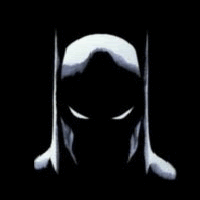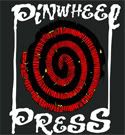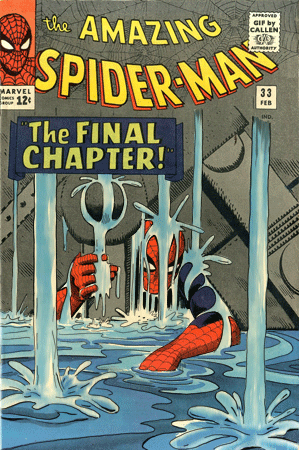Jim Shooter's New Universe Editorial
Moderators: Daniel Jackson, greg
Jim Shooter's New Universe Editorial
Just thought I'd post Jim Shooter's editorial that appeared in the earliest New Universe comics.
Buildings had flat smooth bottoms back before 1961.
No pipes. No wires. No foundations.
Occasionally, people who lived in them (usually
professional people) were hit by lightning or
splashed with chemicals and therefore gained
super powers. Immediately, these folks donned
costumes and began patrolling the city looking
for evildoers- sometimes, that involved picking
up a building or two (exposing the flat smooth
bottom). Frequently they would also catch
falling airplanes. The general populace adored
them. Often, the mayor, a plump, non-ethnic
type (but, of course, there were no ethnic types)
would invite one of these super heroes to
cut the ribbon at a bridge opening. No one in
attendance at these ceremonies, or anywhere
else, doubted the integrity, the sincerity, or the
goodness of the super hero. No one even had a
difference of opinion as to what "goodness"
was in any given situation. Airplanes apparently
were discreet enough not to fall while
the super hero was unavoidably detained or
asleep. Or, at least, the public was discreet
enough not to wonder aloud why Metro Air
flight #202 was saved but Central Air flight
#61 was allowed to crash. The fact that the
super hero, in effect, had decided who would
live and who would die by setting his alarm
clock ten minutes later one day never occured
to him—and the general public apparently as-
sumed that when the super hero was off duty
it was for a good reason. Perhaps the super hero,
in his secret identity was with his girlfriend (who
of course would have preferred being with the super
hero persona but inexplicably was dating a man
who seemed to be exactly his opposite). At least,
a super hero was spared the ignominy of being in
the middle of going to the bathroom when a plane fell.
Super heroes never went to the bathroom in
early 1961 or before. No one did. How could
they? Those buildings had no pipes.
Clearly, a revolution was needed.
During the summer of 1961 Stan Lee, Jack
Kirby, Steve Ditko and a number of other awe-
somely talented people at Marvel Comics
created the Marvel Universe, a place where
buildings had pipes, and people, including super
people, behaved more like real human beings,
and yes, every once in awhile, they went to
the bathroom. Off panel, of course. In other
words, the Marvel Universe was more like the
real universe. Sure, it was a fantasy universe
complete with mer-people inhabiting the
oceans, "repulsor rays," and clothes made of
"unstable molecules"—elements no less out-
rageous than those in other comics. However,
unlike other companies' comics, Marvel Comics
made sense.
Startling.
This bold new approach to comics stories
seemed radical in the early sixties. Especially,
the three-dimensionalizing of the characters.
The idea that several pages could be devoted
to a teenager and his aunt worrying about
their money troubles would have been heresy
at any company besides Marvel. The thought
that a page or two should be spent showing a
young man's exultation in the gloriousness of
unaided flight might have gotten you fired else-
where- at first, anyway. Over the years, every
comics company came around and embraced
the Marvel philosophy. Some even have done
major overhauls of their lines trying to become
more like Marvel. Try to find a comics company
that doesn’t do its best to do three-dimensional
characters, with human problems and human
joys, operating in a logical, internally consistent
fantasy world like Marvel's. And so it has come
to pass that, once again, everyone seems to
agree, to a great extent, on how to do comics.
Therefore, clearly, a revolution is needed.
Again.
During the summer of 1986, Archie Good-
win, Tom DeFalco, a number of other people at
Marvel Comics and I created the New Uni-
verse. Or, more correctly, we simply decided to
put to use a universe hitherto unused in comics.
Our own. The one we live in. Real pipes. Real
people. Real bathrooms. No mer-people. No
repulsors. No unstable molecules. In fact, no
fantasy or fantastic elements at all except for
the very few we introduce. Carefully. Does it
make sense? You bet. As much as the universe
outside your window does. A universe where
time passes and things change, and ...well,
you know. You live in it.
Startling.
Jim Shooter
Editor in Chief
Buildings had flat smooth bottoms back before 1961.
No pipes. No wires. No foundations.
Occasionally, people who lived in them (usually
professional people) were hit by lightning or
splashed with chemicals and therefore gained
super powers. Immediately, these folks donned
costumes and began patrolling the city looking
for evildoers- sometimes, that involved picking
up a building or two (exposing the flat smooth
bottom). Frequently they would also catch
falling airplanes. The general populace adored
them. Often, the mayor, a plump, non-ethnic
type (but, of course, there were no ethnic types)
would invite one of these super heroes to
cut the ribbon at a bridge opening. No one in
attendance at these ceremonies, or anywhere
else, doubted the integrity, the sincerity, or the
goodness of the super hero. No one even had a
difference of opinion as to what "goodness"
was in any given situation. Airplanes apparently
were discreet enough not to fall while
the super hero was unavoidably detained or
asleep. Or, at least, the public was discreet
enough not to wonder aloud why Metro Air
flight #202 was saved but Central Air flight
#61 was allowed to crash. The fact that the
super hero, in effect, had decided who would
live and who would die by setting his alarm
clock ten minutes later one day never occured
to him—and the general public apparently as-
sumed that when the super hero was off duty
it was for a good reason. Perhaps the super hero,
in his secret identity was with his girlfriend (who
of course would have preferred being with the super
hero persona but inexplicably was dating a man
who seemed to be exactly his opposite). At least,
a super hero was spared the ignominy of being in
the middle of going to the bathroom when a plane fell.
Super heroes never went to the bathroom in
early 1961 or before. No one did. How could
they? Those buildings had no pipes.
Clearly, a revolution was needed.
During the summer of 1961 Stan Lee, Jack
Kirby, Steve Ditko and a number of other awe-
somely talented people at Marvel Comics
created the Marvel Universe, a place where
buildings had pipes, and people, including super
people, behaved more like real human beings,
and yes, every once in awhile, they went to
the bathroom. Off panel, of course. In other
words, the Marvel Universe was more like the
real universe. Sure, it was a fantasy universe
complete with mer-people inhabiting the
oceans, "repulsor rays," and clothes made of
"unstable molecules"—elements no less out-
rageous than those in other comics. However,
unlike other companies' comics, Marvel Comics
made sense.
Startling.
This bold new approach to comics stories
seemed radical in the early sixties. Especially,
the three-dimensionalizing of the characters.
The idea that several pages could be devoted
to a teenager and his aunt worrying about
their money troubles would have been heresy
at any company besides Marvel. The thought
that a page or two should be spent showing a
young man's exultation in the gloriousness of
unaided flight might have gotten you fired else-
where- at first, anyway. Over the years, every
comics company came around and embraced
the Marvel philosophy. Some even have done
major overhauls of their lines trying to become
more like Marvel. Try to find a comics company
that doesn’t do its best to do three-dimensional
characters, with human problems and human
joys, operating in a logical, internally consistent
fantasy world like Marvel's. And so it has come
to pass that, once again, everyone seems to
agree, to a great extent, on how to do comics.
Therefore, clearly, a revolution is needed.
Again.
During the summer of 1986, Archie Good-
win, Tom DeFalco, a number of other people at
Marvel Comics and I created the New Uni-
verse. Or, more correctly, we simply decided to
put to use a universe hitherto unused in comics.
Our own. The one we live in. Real pipes. Real
people. Real bathrooms. No mer-people. No
repulsors. No unstable molecules. In fact, no
fantasy or fantastic elements at all except for
the very few we introduce. Carefully. Does it
make sense? You bet. As much as the universe
outside your window does. A universe where
time passes and things change, and ...well,
you know. You live in it.
Startling.
Jim Shooter
Editor in Chief
Last edited by StarBrand on Thu Jul 17, 2008 12:58 am, edited 3 times in total.
- dellamorte
- Zombies and nightstand nightmares

- Posts: 6544
- Joined: Wed Feb 04, 2004 8:28 pm
- Location: down down down to mephisto's cafe
- Draco
- Well I think I talked enough poop...

- Posts: 10178
- Joined: Mon Dec 03, 2007 3:44 pm
- Valiant fan since: preordered vh1 from start
- Favorite character: X-O from vh1
- Favorite title: X-O vh1
- Favorite writer: Good question?
- Favorite artist: ooooh another good question
- Location: Dead Universe Comics, Buckinghamshire, England
That was a cool little read.
cheers
Dude

cheers
Dude
I trade as Dead Universe Comics in the UK, which is no surprise to those who know of my legendary Dead Universe habit.
140 boxes and counting !!!
Follow us on facebook
https://www.facebook.com/pages/Dead-Uni ... 1695270458" onclick="window.open(this.href);return false;
140 boxes and counting !!!
Follow us on facebook
https://www.facebook.com/pages/Dead-Uni ... 1695270458" onclick="window.open(this.href);return false;
- Heath
- The Saints will win the Super-Bowl!

- Posts: 11527
- Joined: Thu Dec 30, 2004 7:05 pm
- Valiant fan since: 1992
- Favorite character: VH1 Shadowman; VEI X-O
- Favorite title: VH1 Shadowman; VEI X-O, Harb
- Favorite writer: Bob Hall; Dysart, Van Lente
- Location: Torque's Hundred-Yard-Long New Orleans Saints' Themed Dining Hall
I understand how you feel. The New Universe definately had its' problems, rooted in the funding on the whole thing being pulled by Marvel's new owners before the launch. Still, DP 7 had consistent direction and I thought was excellent, and certainly their adversarial foundation The Clinic was the forerunner of The Harbinger foundation. Psi-Force also strongly influenced the Harbinger title.Heath wrote:It was a great build up to the New Universe, but then it just stopped right when it got to the main topic. I feel I'm missing the second half of the article! Otherwise, it was a very interesting thing to read and did hint at the philosophy behind VALIANT.
Star Brand was Jim Shooter scripts early on with John Romita JR art, and those first 9 or 10 issues are among my all-time favorite comics.
I'm not saying there was no bad stuff in The New U, but there was good stuff too. Either way, the editorial by Shooter is an excellent read. It belongs on the site's homepage. Don't know why I didn't see that before.



